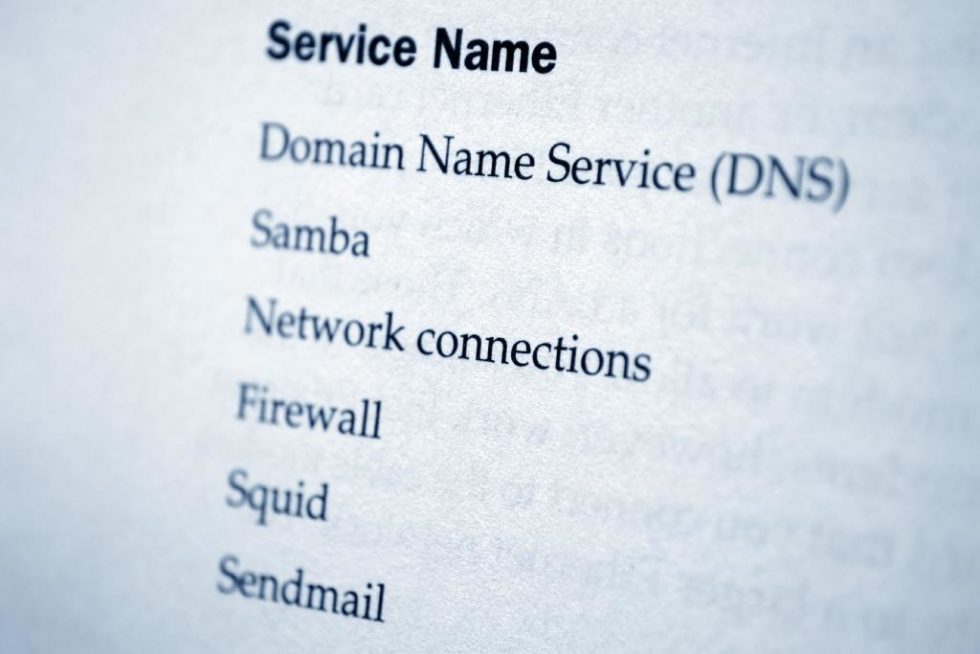
HTML Logo
In today’s digital landscape, a visually appealing and memorable logo is essential for any business or organization. An HTML logo refers to a logo that is designed using HTML and CSS, the building blocks of web development. Unlike traditional static logos, an HTML logo allows for dynamic elements, interactivity, and responsiveness. Let’s delve deeper into the importance of having an HTML logo and how it can elevate your brand.
What is an HTML Logo?
An HTML logo is a graphical representation of a brand or organization created using HTML and CSS code. It leverages the power of web technologies to create visually engaging and dynamic logos that can adapt to different screen sizes and devices. HTML logos are not limited to static images but can incorporate animations, transitions, and interactivity, providing an immersive and captivating user experience.
Importance of an HTML Logo
An HTML logo serves as a visual representation of a brand’s identity and values. It helps establish brand recognition and fosters a sense of trust and familiarity among users. By utilizing the capabilities of HTML and CSS, an HTML logo can create interactive and engaging experiences for website visitors. This enhances the overall user experience and encourages users to explore further.
HTML logos are not constrained by fixed dimensions. They can seamlessly adapt to different screen sizes, ensuring a consistent and visually pleasing representation of your brand across various devices. Optimizing your HTML logo with relevant alt tags, descriptive file names, and structured data can contribute to better search engine optimization (SEO). This helps your logo and brand appear in relevant search results, increasing visibility and driving organic traffic.
Designing an HTML Logo
When it comes to designing an HTML logo, there are several important factors to consider in order to create a visually appealing and impactful brand symbol. Let’s explore the key elements that contribute to the successful design of an HTML logo.
1. Color Scheme and Typography
Choosing the right color scheme and typography is crucial in creating an HTML logo that effectively represents your brand. Colors evoke emotions and convey messages, so selecting a palette that aligns with your brand’s identity and values is essential. Consider the psychology of colors and their impact on perception. For example, warm colors like red and orange can evoke energy and passion, while cool colors like blue and green can convey calmness and trust.
Similarly, typography plays a significant role in logo design. Select fonts that are legible and reflect the personality of your brand. Whether you opt for a classic serif font or a modern sans-serif font, ensure that it complements your logo’s overall design and enhances its visual appeal.
2. Placement and Size
The placement of your HTML logo can greatly influence its visibility and effectiveness. Typically, logos are placed in a prominent location, such as the top left corner of a webpage, as this is where viewers naturally tend to focus their attention. Placing your logo in this position ensures it is easily noticed and reinforces your brand’s presence.
Additionally, consider the size of your logo. It should be proportionate to the surrounding elements on the webpage and clearly visible across different screen sizes and devices. A logo that is too small may go unnoticed, while one that is too large can overwhelm the design. Striking the right balance ensures your logo stands out without overpowering the overall aesthetics of your website.
3. Responsiveness
In today’s mobile-driven world, responsiveness is key. Your HTML logo should adapt seamlessly to different screen sizes and resolutions. Responsive design ensures that your logo retains its visual appeal and legibility across devices, providing a consistent brand experience for all users. Test your logo on various devices to ensure it scales appropriately and remains visually appealing without compromising its integrity.
4. Animation and Interactivity
One of the unique advantages of an HTML logo is the ability to incorporate animations and interactivity. Adding subtle animations or interactive elements to your logo can enhance user engagement and create a memorable experience. However, it’s important to strike a balance and avoid excessive animations that may distract or overwhelm users. Keep the animations smooth, purposeful, and aligned with your brand’s identity and message.
Using HTML Logo for Branding
An HTML logo not only represents your brand visually but also acts as a powerful branding tool. Consistently incorporating your HTML logo across various platforms and marketing channels helps build brand recognition and establishes a strong visual identity. Use your logo on your website, social media profiles, email signatures, and marketing materials to create a cohesive and memorable brand presence.
Optimizing HTML Logo for SEO
In today’s digital landscape, search engine optimization (SEO) plays a crucial role in driving organic traffic to your website. While optimizing your logo itself may not directly impact SEO, there are a few practices you can implement to ensure your HTML logo contributes to your overall SEO efforts:
– Alt Tags: Provide descriptive alt tags for your logo images. Alt tags not only assist visually impaired users but also provide search engines with relevant information about the image, improving its discoverability in search results.
– File Names: Use descriptive file names for your logo images, incorporating relevant keywords if appropriate. Avoid generic file names like “logo.png” and instead opt for something descriptive like “brand-name-logo.png.”
– Structured Data: Implement structured data markup on your website, including your logo, to provide search engines with additional context about your brand and logo. This markup helps search engines understand the significance of your
Elements of an HTML Logo
When designing an HTML logo, it’s important to consider the key elements that contribute to its overall effectiveness and visual appeal. Let’s explore the essential components that make up an HTML logo.
1. Icon or Symbol
The icon or symbol is a central element of an HTML logo. It represents the essence of your brand and acts as a visual identifier. The icon can be a simple graphic, an abstract shape, or a stylized representation of an object. It should be distinct, memorable, and instantly recognizable, even when scaled down or used in different contexts.
2. Typography
Typography plays a crucial role in an HTML logo. It involves selecting the right font, font style, and arrangement of text elements such as the brand name or tagline. The typography should complement the icon or symbol and convey the brand’s personality and message. Consider using custom fonts or modifying existing ones to create a unique and cohesive logo design.
3. Color Palette
The choice of colors in an HTML logo is significant as it evokes emotions and communicates the brand’s identity. Create a color palette that aligns with your brand’s values, target audience, and industry. Use colors strategically to create visual interest and establish a cohesive brand identity. Consider the psychological impact of colors and their associations when selecting hues for your logo.
4. Shape and Composition
The shape and composition of an HTML logo determine its visual balance and impact. Experiment with different shapes, such as squares, circles, or rectangles, to find the one that best represents your brand. Ensure that the logo is well-balanced and visually pleasing, with the elements arranged harmoniously. Consider negative space to create a clean and uncluttered design.
5. Proportions and Scalability
An HTML logo should be designed with proportions that ensure it remains visually appealing and legible across various sizes and resolutions. Consider how the logo will appear on different devices, from desktop screens to mobile devices. Ensure that the logo scales well without losing its integrity or becoming pixelated. Test the logo at different sizes to ensure its readability and impact.
6. Style and Visual Effects
The style and visual effects applied to an HTML logo contribute to its uniqueness and attractiveness. Explore different design styles, such as minimalistic, vintage, or modern, to find the one that resonates with your brand identity. Consider incorporating subtle gradients, shadows, or textures to add depth and visual interest to the logo. However, avoid excessive visual effects that may distract from the core message of the logo.
7. Consistency and Versatility
Consistency is crucial when using an HTML logo across various platforms and applications. Ensure that the logo remains consistent in terms of color, typography, and overall design. This consistency reinforces brand recognition and creates a cohesive brand identity. Additionally, the design of the logo is versatile, allowing it to be used in different formats and contexts, such as on websites, social media profiles, or printed materials.
By carefully considering these elements, you can create an HTML logo that effectively represents your brand, communicates your message, and leaves a lasting impression on your audience.
Color Scheme and Typography: Making Your HTML Logo Stand Out
When designing an HTML logo, two crucial elements that significantly impact its visual appeal and effectiveness are the color scheme and typography. Let’s explore how the right combination of colors and typography can make your HTML logo stand out and leave a lasting impression.
Color Scheme: Conveying Emotions and Brand Identity
The color scheme you choose for your HTML logo plays a vital role in evoking emotions and conveying your brand’s identity. Different colors have distinct psychological associations and can elicit specific feelings in viewers. Here are some commonly used colors and their potential meanings:
– Red: Symbolizes energy, passion, and excitement. It grabs attention and can create a sense of urgency.
– Blue: Represents trust, reliability, and tranquility. It is often used by brands that want to convey a sense of professionalism and dependability.
– Yellow: Conveys optimism, happiness, and warmth. It can evoke feelings of joy and positivity.
– Green: Symbolizes growth, nature, and harmony. It is commonly associated with eco-friendly and sustainable brands.
– Orange: Represents enthusiasm, creativity, and vitality. It can stimulate excitement and draw attention.
– Purple: Symbolizes luxury, creativity, and spirituality. It is often used by brands that want to convey elegance and sophistication.
Consider your brand’s values, target audience, and industry when selecting colors for your HTML logo. Choose a color palette that aligns with your brand’s identity and evokes the desired emotions in viewers. It’s also important to ensure that the colors you choose work harmoniously together and create a visually pleasing composition.
Typography: Legibility and Brand Personality
Typography refers to the selection and arrangement of fonts in your HTML logo. The right typography can enhance the visual impact of your logo and convey your brand’s personality. Here are some factors to consider when choosing typography for your HTML logo:
1. Font Selection
2. Font Style
3. Hierarchy and Arrangement
4. Customization
5. Readability
By carefully selecting a color scheme that aligns with your brand’s identity and evokes the desired emotions, as well as choosing typography that reflects your brand’s personality and ensures legibility, you can create an HTML logo that stands out and effectively represents your brand. These elements, when used harmoniously, contribute to a visually appealing and memorable logo that leaves a strong impression on your audience.
Placement and Size: Maximizing Visibility and Impact
The placement and size of your HTML logo are crucial factors that can greatly influence its visibility, impact, and overall effectiveness. Consider the following aspects when determining the placement and size of your logo:
1. Prominent Placement: Position your HTML logo in a prominent location where it is easily noticed and grabs the viewer’s attention. Traditionally, logos are placed in the top left corner of a webpage as it is where users instinctively look first. This placement reinforces your brand’s presence and ensures that your logo is one of the first things visitors see.
2. Balance with Surrounding Elements: Ensure that your logo is proportionate to the surrounding elements on your webpage. It should neither be too overpowering nor get lost amidst other content. Strive for a visually balanced composition where your logo stands out without overshadowing the overall design.
3. Consistency across Devices: With the increasing prevalence of mobile devices, it is essential to ensure that your logo remains visible and impactful across different screen sizes. Test your logo on various devices to ensure it retains its visual appeal and legibility. Responsive design principles should be employed to adapt the logo’s size and placement for optimal user experience.
Responsiveness: Adapting to Different Devices
In today’s mobile-centric world, responsiveness is paramount. Your HTML logo should seamlessly adapt to different screen sizes and resolutions. Consider the following practices to ensure your logo remains responsive:
1. Scalable Design: Design your logo in a vector format, such as SVG (Scalable Vector Graphics), that allows for easy scalability without loss of quality. This ensures that your logo looks crisp and clear, regardless of the device’s screen resolution.
2. Adaptive Layout: Implement responsive design techniques that adjust the layout of your webpage based on the device’s screen size. This includes placing your logo in a fluid container that adjusts its size and position accordingly. This way, your logo remains visible and impactful on any device.
3. Retina Display Optimization: Optimize your logo for high-resolution screens, such as Retina displays. Provide versions of your logo that have higher pixel density to ensure it appears sharp and clear on devices with high-resolution screens.
Animation and Interactivity: Enhancing User Engagement
One advantage of an HTML logo is the ability to incorporate animations and interactivity. Thoughtfully adding these elements can enhance user engagement and create a memorable experience. Consider the following guidelines when using animation and interactivity in your HTML logo:
1. Subtlety and Purpose: Use animations and interactive elements sparingly and purposefully. Avoid overwhelming users with excessive or distracting effects. Instead, focus on subtle animations or interactive elements that enhance the logo’s storytelling or draw attention to important aspects.
2. Brand Consistency: Ensure that the animations and interactivity align with your brand’s personality and message. Maintain a consistent visual style and adhere to your brand’s guidelines, ensuring that the interactive elements seamlessly integrate with the logo’s overall design.
Using HTML Logo for Branding: Establishing a Strong Visual Identity
An HTML logo serves as a powerful tool for branding, allowing you to establish a strong visual identity for your business. Here’s how you can effectively use your HTML logo for branding purposes:
1. Consistency Across Platforms: Ensure that your HTML logo is consistently used across all platforms and marketing channels. This includes your website, social media profiles, email signatures, digital ads, and offline marketing materials. Consistent use of your logo reinforces brand recognition and creates a cohesive brand image.
2. Brand Integration: Integrate your HTML logo with other branding elements such as colors, typography, and taglines. The logo should be designed to encapsulate your brand’s values and evoke a sense of familiarity and trust in your audience. Use consistent branding elements to strengthen the association between your logo and your brand identity.
3. Versatility and Adaptability: Design your HTML logo to be versatile and adaptable to different contexts and formats. Ensure that it can be scaled up or down without losing its visual impact or becoming pixelated. This versatility allows your logo to be used across various platforms and materials while maintaining its integrity.
4. Positive Brand Experience: Your HTML logo should contribute to a positive brand experience for your audience. Make sure that it is visually appealing, easily recognizable, and leaves a lasting impression. A well-designed logo enhances brand recall and helps create a strong emotional connection with your target audience.
Optimizing HTML Logo for SEO: Enhancing Online Visibility
Optimizing your HTML logo for search engine optimization (SEO) can significantly improve your online visibility and brand exposure. Consider the following strategies to optimize your HTML logo for SEO:
1. Image Alt Text: Add descriptive alt text to your HTML logo image. Alt text provides textual information about the image, which search engines can read and understand. Use relevant keywords and describe the logo accurately to improve its visibility in search engine results.
2. File Naming: When saving your HTML logo file, use descriptive and keyword-rich file names. This helps search engines identify the content of the image and improves its chances of appearing in relevant search results.
3. Image Compression: Optimize the file size of your HTML logo without compromising its quality. Compressed images load faster, which positively impacts your website’s loading speed—a crucial factor for SEO. Use image compression techniques or online tools to reduce the file size while maintaining visual clarity.
4. Schema Markup: Implement schema markup for your HTML logo. Schema markup provides additional information about the logo to search engines, allowing them to display rich snippets in search results. Rich snippets can include details like the logo’s dimensions, file format, or a thumbnail preview.
The Bottom Line
Designing an HTML logo involves careful consideration of various elements such as color scheme, typography, placement, and responsiveness. By paying attention to these elements, you can create a visually appealing and impactful logo that effectively represents your brand.
Furthermore, using your HTML logo for branding helps establish a strong visual identity and fosters brand recognition across different platforms. Consistent usage, integration with other branding elements, and adaptability are key factors for successful branding with your HTML logo.
In addition, optimizing your HTML logo for SEO can enhance its online visibility, allowing it to appear in relevant search results. Implementing strategies such as image alt text, file naming, image compression, and schema markup contribute to better SEO performance.
Remember, your HTML logo is an essential element of your brand’s identity. Invest time and effort into its design and optimization to create a logo that not only represents your brand effectively but also leaves a lasting impression on your audience.








